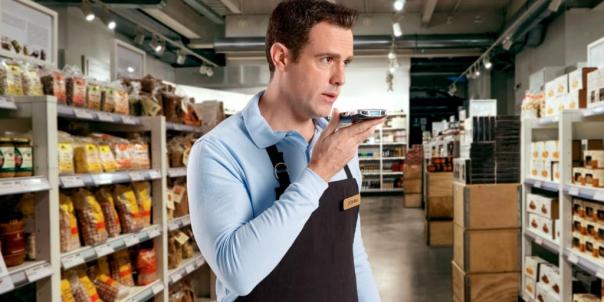
Getting the front of house right is just the tip of the iceberg; executing the extensive list of tasks behind the scenes is extremely complex. This can often mean employees spend more time ensuring processes are compliant and complete than focusing on ensuring an unforgettable customer experience.
Food hygiene and food storage management are crucial elements in the hospitality industry, paramount to ensuring businesses remain reputable and ensuring the safety of their customers. Inadequate management of produce at any point in the supply chain, from warehouse to the restaurant floor, can have wide-ranging consequences. In the first place, low confidence amongst consumers can result in revenue loss as they begin to choose alternative options. Fines can be imposed and even arrests made if negligence occurs.
From warehouse to kitchen
From the very start of the supply chain, businesses must ensure operations are reliable and compliant with legislation. Sophisticated food tastes, varying origins of produce and the increased focus on different diets and allergies make food storage an extremely pernickety process. It’s not just a case of cold or frozen storage; produce must be kept in a variety of temperatures depending on individual requirements. Meanwhile, all allergens must be properly labelled and kept away from foods deemed ‘allergen free’ and cross contamination must not occur. Managing the stockroom is an endless proposition.
In parallel to managing inventory and stock, there is a growing desire among patrons and owners to know the exact origin and journey of food. To manage this process manually is near impossible and will undoubtedly lead to mistakes. Easy to scan codes on produce teamed with smart databases mean the full spectrum of information is quickly available at all times.
Intelligent cold chain solutions can effectively manage the transportation of goods and increase worker efficiency if implemented in the right way. For instance, by arming workers with cold-rated handheld or wearable devices that can withstand temperature swings allows workers to manage stock and scan areas for issues or inconstancies. They’ll have increased visibility over the individual needs of the produce they are working with, removing the need for guesswork. As a result, workers have access to real-time information at their fingertips, straight from the inventory management database. This ultimately empowers workers to achieve flawless fulfilment, no matter where the operation must take place.
Storage in the Kitchen
Storage of dry and raw food in the kitchen is one of the most important food preparation steps and as such, strict legal guidelines must be followed. In England, Wales and Northern Ireland, it is a legal requirement that chilled food be kept at 8°C or below. This is also promoted by the CFA worldwide. In tandem, open food stuffs must be wrapped and labelled with strict use-by or best-before dates clearly visible.
Meanwhile, foods that need to remain frozen, such as ice-cream or frozen meat must be stored in the freezer as soon as they are delivered and restaurants should strictly follow the “once opened, consume within # days” advice. Leaving frozen or raw food out at higher temperatures especially in warmer temperature puts customer safety and quality at risk.
To adhere to these strict regulations, efficient and accurate labelling is imperative, but this is not necessarily as easy as one might think. Kitchens are a difficult ecosystem to navigate. They can be simultaneously hot and cold in different areas – damp and dry. As such, traditional labels can fall off, smudge or simply not be effective. In tandem, the sheer volume of different ingredients in different dishes and products means things are constantly changing – no one label is the same. However, if even one seemingly insignificant piece of information is not relayed correctly, the consequences could be severe.
By arming workers and kitchens with specially designed compact printers, businesses can ensure produce is labelled efficiently and most importantly, accurately. Their size allows them to be placed in busy or cramped environments without causing disruption to workers, whilst being readily available to provide unique labels for each new product. Not only this, they also print specialised labels that can withstand a multitude of environments.
Cooking for millions
A great example of smart food and hospitality technology can be seen across Disney’s six resorts and 12 parks worldwide. Restaurants are key to the experience of millions, and Disney takes all precautions necessary to ensure not just unforgettable moments but safe ones.
By investing in mobile devices from that can swipe any surface to monitor bacteria levels, Disney has successfully improved hygiene in all six resorts, while food labelling technology has ensured buffets are up-to-date and stock levels properly monitored. Alongside this, wireless temperature probes were brought in to improve both employee and customer safety. In a busy and constantly changing environment such as this, technology has taken the strain off front-line workers, empowering them to work more efficiently and enabling them to focus on creating the idyllic atmosphere visitors expect from the brand.
Ensuring none of the data captured is wasted, Disney is also tracking and analysing everything so it can proactively identify areas for improvement across all their restaurants. This increased visibility essentially allows workers to predict where problems may arise, before they become a risk to customers. This leads to smoother service and significantly decreases the risks associated with temperature control and food.
Without question, increasing expectations on the restaurant industry and the explosion of new tastes, diets and online review websites has made improving food safety more challenging than ever before. However, with the helping hand of devices and solutions, the restaurant industry can improve monitoring, preparation and presentation whilst still ensuring compliance.